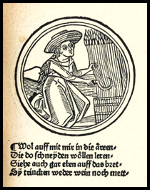We’re still trying to figure out the climate patterns after an unusually hard winter of 2019 that brought record snowfall to our part of the world, following by virtually no precipitation this past winter. Back in the day when the fortunes of harvest meant the difference between a local population’s prospect of plenty or privation for an entire year, an atmosphere of intense anticipation stirred across the countryside as summer beckoned. For the small tenant farmers of medieval times, several acres the harvest required the labor of all able-bodied family members from older children to adults. On the manorial estates of England and France, workers could number more than 200 so the harvest could be completed within the few prime weeks of summer between the kernel’s full ripeness and risk of damage from sprout or threat of rotting. Forces of nature that had brought forth bounty in the fields could also conspire to ruin crops in late summer with shattering hail, incessant rain, or felling winds, torching entire fields by lightning, or with a plague of all-consuming locusts. Fasts and feasts of the medieval church followed a sacred rhythm of agrarian wholeness represented by a liturgical calendar in recognition of parishioners’ reliance upon divine sustenance and protection from forces beyond mortal control.
Johann Hans, Celebration of the Harvest Festival in Ulm (1817), Lithograph, 9 ½ x 13 ¼ inches; Columbia Heritage Collection
Ulm’s grand medieval Ulmer Münster church and Münsterplatz are depicted in an early nineteenth century print that indicates the vulnerability and devotion of the populace in the wake of the 1815 eruption of Mt. Tambora in the Dutch East Indies (Indonesia). The Northern Hemisphere’s subsequent “Year without a Summer” with recurrent rains and cooler temperatures led to the catastrophic crop failures and famine in central Europe. With the defeat of Napoleon in 1815 and return of the climate to more normal conditions by 1817, city folk and farmers alike gave thanks and renewed harvest celebrations throughout the land. In Frankfurt Pastor Gerhard Friederich led worshippers in a grand July Erntedankefest with prayers and hymns; Johann Hans’s Celebration of the Harvest Festival in Ulm depicts a similar event in that southern German city with verse about the calamity:
It was a sad year, a year of sorrow.
The poor spoke with tears every morning:
“Where do I find bread for my children today?”
The joy had been veiled, hidden.
Wherever one went, it was still and deathly.
“Oh open your heart, Mother Earth,” we begged,
“That we may be helped!”
And see, a beautiful day has come,
Joyous laughter has returned to all.












